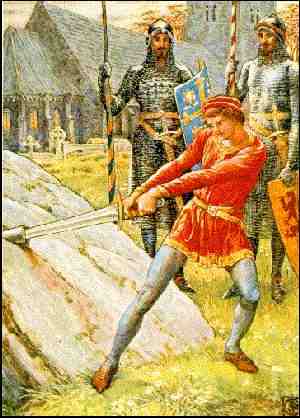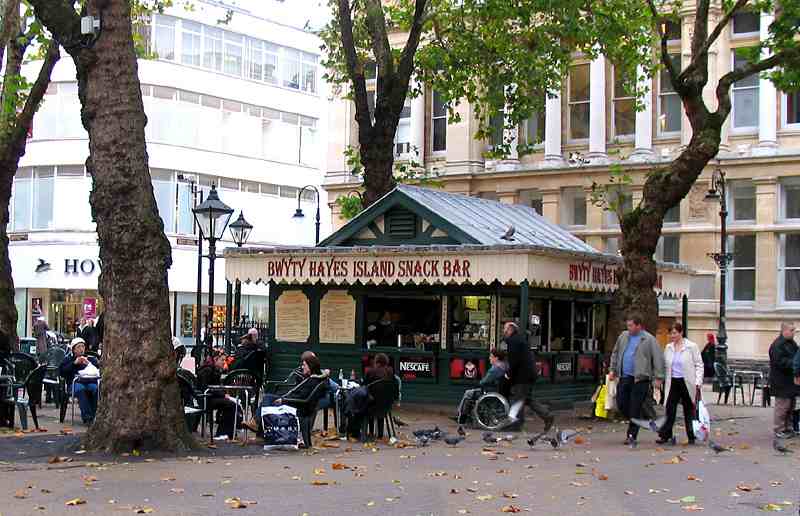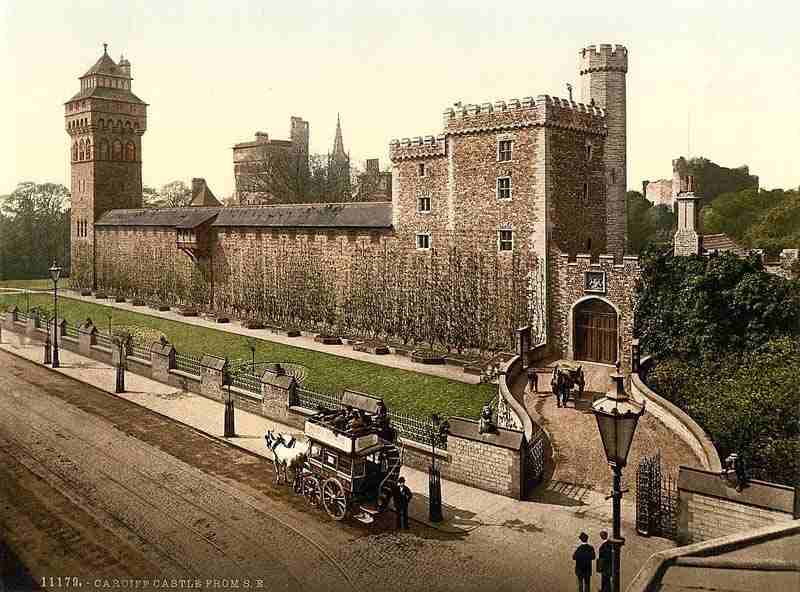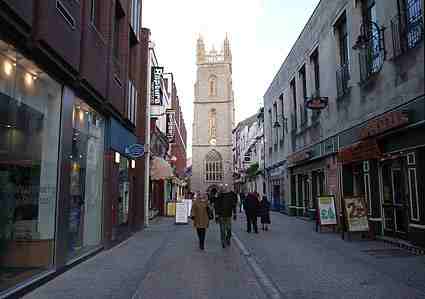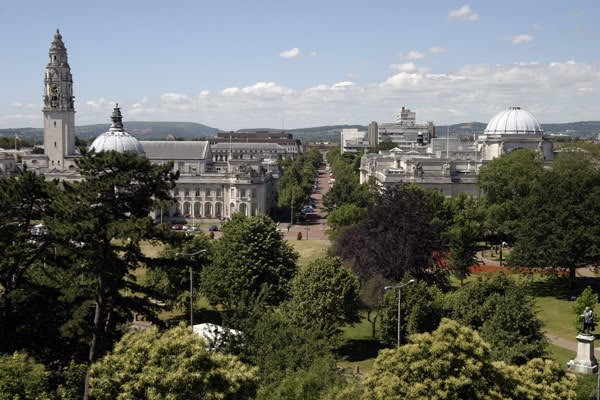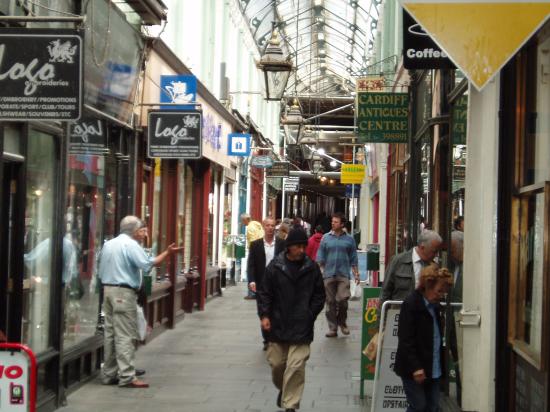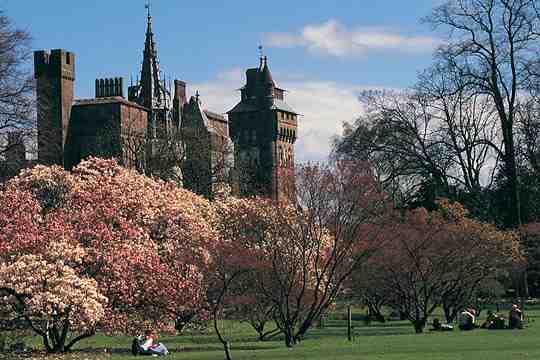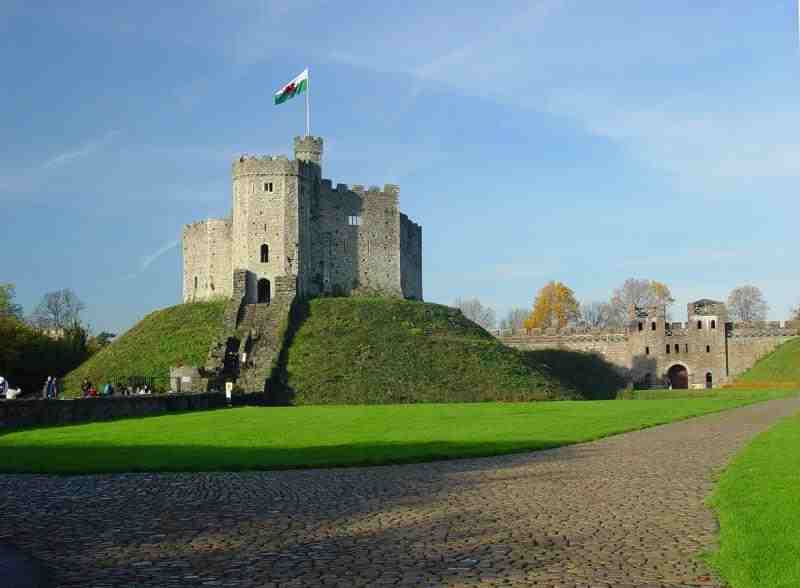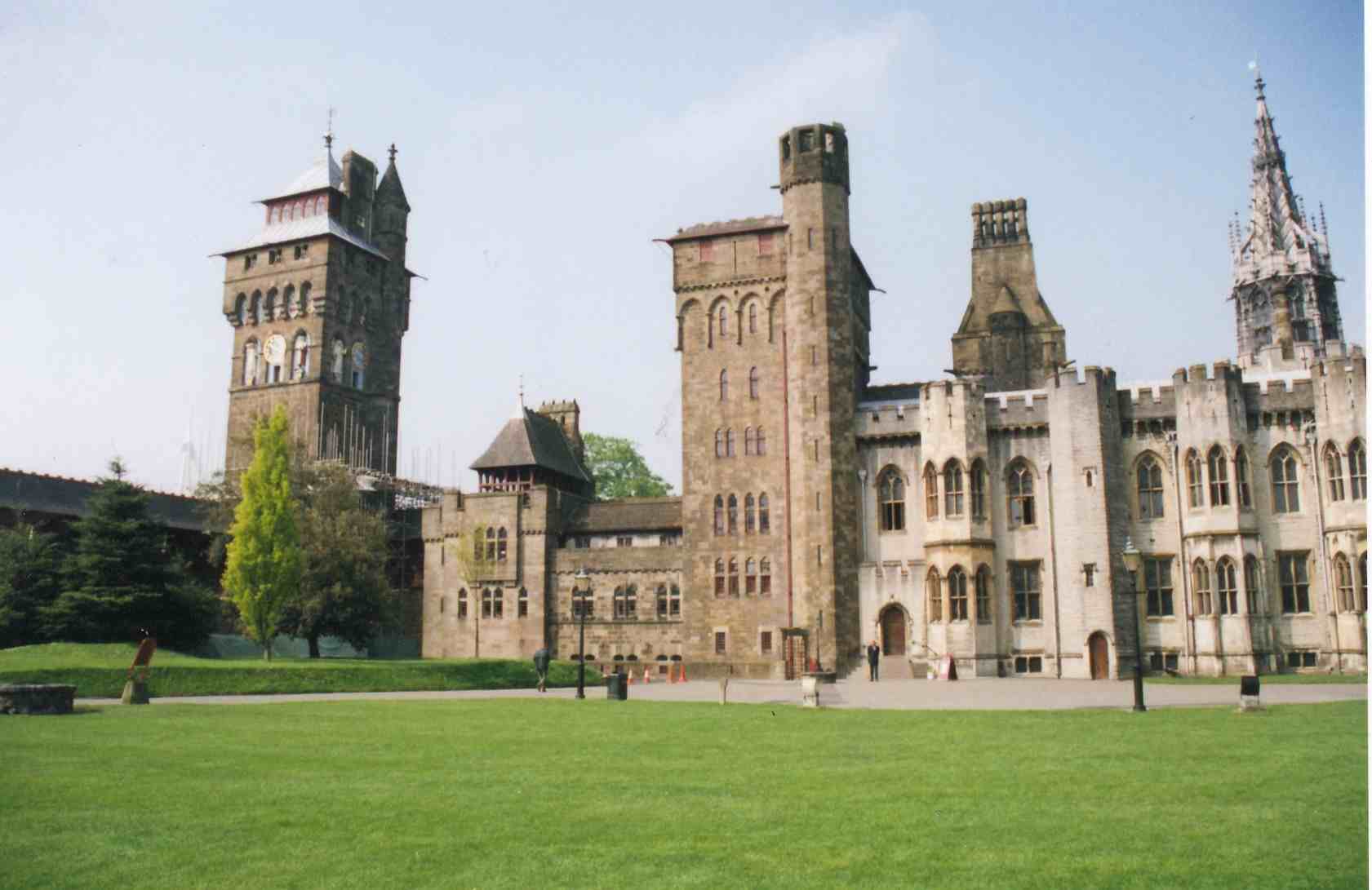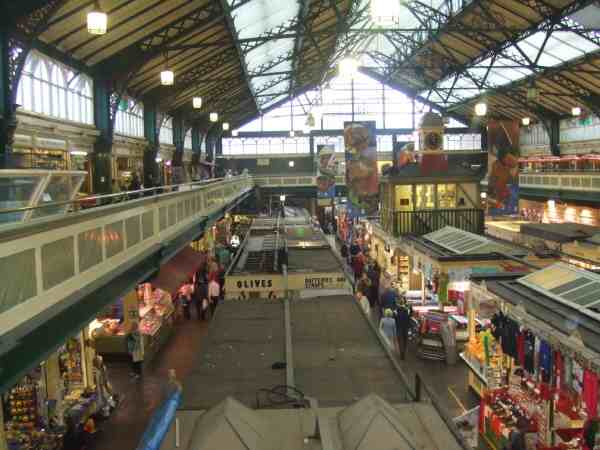THE
OF
THEOSOPHY

A Definitive Work on Theosophy
By
William Quan Judge

CHAPTER
12
Kama
Loka
Let us now consider the states of man after the death
of the body and before birth, having looked over the whole field of the
evolution of things and beings in a general way. This brings up at once the
questions: Is there any heaven or hell, and what are they? Are they states or
places? Is there a spot in space
where they may be found and to which we go or from
where we come? We must also go back to the subject of the fourth principle of
the constitution of man, that called Kama in Sanskrit and desire or passion in
English. Bearing in mind what was said about that principle, and also the
teaching in respect to the astral body and the Astral Light, it will be easier
to understand what is taught about the two states ante and post mortem. In
chronological order we go into kama loka -- or the plane of desire -- first on
the demise of the body, and then the higher principles, the real man, fall into
the state of Devachan.
After dealing with kama loka it will be more easy to
study the question of Devachan. The breath leaves the body and we say the man
is dead, but that is only the beginning of death; it proceeds on other planes.
When the frame is cold and eyes closed, all the forces of the body and mind
rush through the brain, and by a series of pictures the whole life just ended
is imprinted indelibly on the inner man not only in a general outline but down
to the smallest detail of even the most minute and fleeting impression. At this
moment, though every indication leads the physician to pronounce for death and
though to all intents and purposes the person is dead to this life, the real
man is busy in the brain, and not until his work there is ended is the person
gone. When this solemn work is over the astral body detaches itself from the
physical, and, life energy having departed, the remaining five principles are
in the plane of kama loka.
The natural separation of the principles brought about
by death divides the total man into three parts:
First, the visible body with all its elements left to
further disintegration on the earth plane, where all that it is composed of is
in time resolved into the different physical departments of nature.
Second, the kama rupa made up of the astral body and
the passions and desires, which also begins at once to go to pieces on the
astral plane;
Third, the real man, the upper triad of
Atma-Buddhi-Manas, deathless but now out of earth conditions, devoid of body,
begins in devachan to function solely as mind clothed in a very ethereal
vesture which it will shake off when the time comes for it to return to earth.
Kama loka -- or the place of desire -- is the astral
region penetrating and surrounding the earth. As a place it is on and in and
about the earth. Its extent is to a measurable distance from the earth, but the
ordinary laws obtaining here do not obtain there, and entities therein are not
under the same conditions as to space and time as we are. As a state it is
metaphysical, though that metaphysic relates to the astral plane. It is called
the plane of desire because it relates to the fourth principle, and in it the
ruling force is desire devoid of and divorced from intelligence.
It is an astral sphere intermediate between earthly
and heavenly life. Beyond any doubt it is the origin of the Christian theory of
purgatory, where the soul undergoes penance for evil done and from which it can
be released by prayer and other ceremonies or offerings.
The fact underlying this superstition is that the soul
may be detained in kama loka by the enormous force of some unsatisfied desire,
and cannot get rid of the astral and kamic clothing until that desire is
satisfied by some one on earth or by the soul itself. But if the person was
pure minded and of high aspirations,
the separation of the principles on that plane is soon
completed, permitting the higher triad to go into Devachan. Being the purely
astral sphere, it partakes of the nature of the astral matter which is essentially
earthly and devilish, and in it all the forces work undirected by soul or
conscience. It is the slag-pit, as it were, of the great furnace of life, where
nature provides for the sloughing off of elements which have no place in
Devachan, and for that reason it must have many degrees, every one of which was
noted by the ancients.
These degrees are known in Sanskrit as lokas or places
in a metaphysical sense. Human life is very varied as to character and other
potentialities, and for each of these the appropriate place after death is
provided, thus making kama loka an
infinitely varied sphere. In life some of the
differences among men are modified and some inhibited by a similarity of body
and heredity, but in kama loka all the hidden desires and passions are let
loose in consequence of the absence of body, and for that reason the state is
vastly more diversified than the life plane. Not only is it necessary to
provide for the natural varieties and
differences, but also for those caused by the manner
of death, about which something shall be said. And all these various divisions
are but the natural result of the life thoughts and last thoughts of the
persons who die on earth. It is beyond the scope of this work to go into a
description of all these degrees, inasmuch as volumes would be needed to
describe them, and then but few would understand.
To deal with kama loka compels us to deal also with
the fourth principle in the classification of man's constitution, and arouses a
conflict with modern ideas and education on the subject of the desires and
passions. It is generally supposed that the desires and passions are inherent
tendencies in the individual, and they have an altogether unreal and misty
appearance for the ordinary student. But in this system of philosophy they are
not merely inherent in the individual nor are they due to the body per se.
While the man is living in the world the desires and passions -- the principle
kama -- have no separate life apart from the astral and inner man, being, so to
say, diffused throughout his being. But as they coalesce with the astral body
after death and thus form an entity with its own term of life, though without
soul, very important questions arise.
During mortal life the desires and passions are guided
by the mind and soul; after death they work without guidance from the former
master; while we live we are responsible for them and their effects, and when
we have left this life we are still responsible, although they go on working
and making effects on others while they last as the sort of entity I have
described, and without our direct guidance. In this is seen the continuance of
responsibility.
They are a portion of the skandhas -- well known in
eastern philosophy -- which are the aggregates that make up the man. The body
includes one set of the skandhas, the astral man another, the kama principle is
another set, and still others pertain to other parts. In kama are the really
active and important ones which control rebirths and lead to all the varieties
of life and circumstance upon each rebirth.
They are being made from day to day under the law that
every thought combines instantly with one of the elemental forces of nature,
becoming to that extent an entity which will endure in accordance with the strength
of the thought as it leaves the brain, and all of these are inseparably
connected with the being who evolved them. There is no way of escaping; all we
can do is
to have thoughts of good quality, for the highest of
the Masters themselves are not exempt from this law, but they "people
their current in space" with entities powerful for good alone.
Now in kama loka this mass of desire and thought
exists very definitely until the conclusion of its disintegration, and then the
remainder consists of the essence of these skandhas, connected, of course, with
the being that evolved and had them. They can no more be done away with than we
can blot out the universe.
Hence they are said to remain until the being comes
out of devachan, and then at once by the law of attraction they are drawn to
the being, who from them as germ or basis builds up a new set of skandhas for
the new life. Kama loka therefore is distinguished from the earth plane by
reason of the existence therein, uncontrolled and unguided, of the mass of
passions and desires; but at the same time earth-life is also a kama loka,
since it is largely governed by the principle kama, and will be so until at a
far distant time in the course of evolution the races of men shall have
developed the fifth and sixth principle, thus throwing kama into its own sphere
and freeing earth-life from its
influence.
The astral man in kama loka is a mere shell devoid of
soul and mind, without conscience and also unable to act unless vivified by
forces outside of itself. It has that which seems like an animal or automatic
consciousness due wholly to the very recent association with the human Ego. For
under the principle laid
down in another chapter, every atom going to make up
the man has a memory of its own which is capable of lasting a length of time in
proportion to the force given it. In the case of a very material and gross or
selfish person the force lasts longer than in any other, and hence in that case
the automatic consciousness will be more definite and bewildering to one who
without knowledge dabbles with necromancy. Its purely astral portion contains
and carries the record of all that ever passed before the person when living,
for one of the qualities of the astral substance is to absorb all scenes and
pictures and the impressions of all thoughts, to keep them, and to throw them
forth by reflection when the conditions permit.
This astral shell, cast off by every man at death,
would be a menace to all men were it not in every case, except one which shall
be mentioned, devoid of all the higher principles which are the directors. But
those guiding constituents being disjoined from the shell, it wavers and floats
about from place to place without any will of its own, but governed wholly by
attractions in the astral and magnetic fields.
It is possible for the real man -- called the spirit
by some -- to communicate with us immediately after death for a few brief
moments, but, those passed, the soul has no more to do with earth until
reincarnated. What can and do influence the sensitive and the medium from out
of this sphere are the shells I have described. Soulless and conscienceless,
these in no sense are the spirits of our deceased ones. They are the clothing
thrown off by the inner man, the brutal earthly portion discarded in the flight
to devachan, and so have always been considered by the ancients as devils --
our personal devils -- because essentially astral, earthly, and passional. It
would be strange indeed if this shell, after being for so long the vehicle of
the real man on earth, did not retain an automatic memory and consciousness. We
see the decapitated body of the frog or the cock moving and acting for a time
with a seeming intelligence, and why is it not possible for the finer and more
subtle astral form to act and move with a far greater amount of seeming mental
direction?
Existing in the sphere of kama loka, as, indeed, also
in all parts of the globe and the solar system, are the elementals or nature
forces. They are innumerable, and their divisions are almost infinite, as they
are, in a sense, the nerves of nature. Each class has its own work just as has
every natural element or thing.
As fire burns and as water runs down and not up under
their general law, so the elementals act under law, but being higher in the
scale than gross fire or water their action seems guided by mind. Some of them
have a special relation to mental operations and to the action of the astral
organs, whether these be joined to a body or not. When a medium forms the
channel, and also from other natural co-ordination, these elementals make an
artificial connection with the shell of a deceased person, aided by the nervous
fluid of the medium and others near, and then the shell is galvanized into an
artificial life. Through the medium connection is made with the physical and
psychical forces of all present.
The old impressions on the astral body give up their
images to the mind of the medium, the old passions are set on fire. Various
messages and reports are then obtained from it, but not one of them is
original, not one is from the spirit.
By their strangeness, and in consequence of the
ignorance of those who dabble in it, this is mistaken for the work of spirit,
but it is all from the living when it is not the mere picking out from the
astral light of the images of what has been in the past. In certain cases to be
noted there is an intelligence at work
that is wholly and intensely bad, to which every
medium is subject, and which will explain why so many of them have succumbed to
evil, as they have confessed.
A rough classification of these shells that visit
mediums would be as follows:
(1) Those of the recently deceased whose place of
burial is not far away. This class will be quite coherent in accordance with
the life and thought of the former owner. An unmaterial, good, and
spiritualized person leaves a shell that will soon disintegrate. A gross, mean,
selfish, material person's shell will be heavy, consistent, and long lived: and
so on with all varieties.
(2) Those of persons who had died far away from the
place where the medium is. Lapse of time permits such to escape from the
vicinity of their old bodies, and at the same time brings on a greater degree
of disintegration which corresponds on the astral plane to putrefaction on the
physical.
These are vague, shadowy, incoherent; respond but
briefly to the psychic stimulus, and are whirled off by any magnetic current.
They are galvanized for a moment by the astral currents of the medium and of
those persons present who were related to the deceased.
(3) Purely shadowy remains which can hardly be given a
place. There is no English to describe them, though they are facts in this
sphere. They might be said to be the mere mould or impress left in the astral
substance by the once coherent shell long since disintegrated. They are
therefore so near being fictitious as to almost deserve the designation. As
such
shadowy photographs they are enlarged, decorated, and
given an imaginary life by the thoughts, desires, hopes, and imaginings of
medium and sitters at the seance.
(4) Definite, coherent entities, human souls bereft of
the spiritual tie, now tending down to the worst state of all, avitchi, where
annihilation of the personality is the end. They are known as black magicians.
Having centered the consciousness in the principle of kama, preserved
intellect, divorced themselves from spirit, they are the only damned beings we
know. In life they had human bodies and reached their awful state by persistent
lives of evil for its own sake; some of such already doomed to become what I
have described, are among us on earth today. These are not ordinary shells, for
they have centered all their force in kama, thrown out every spark of good
thought or aspiration, and have a complete mastery of the astral sphere. I put
them in the classification of shells because they are such in the sense that
they are doomed to disintegration consciously as the others are to the same end
mechanically only.
They may and do last for many centuries, gratifying
their lusts through any sensitive they can lay hold of where bad thought gives
them an opening. They preside at nearly all seances, assuming high names and
taking the direction so as to keep the control and continue the delusion of the
medium, thus enabling themselves to have a convenient channel for their own
evil purposes. Indeed, with the shells of suicides, of those poor wretches who
die at the hand of the law, of drunkards and gluttons, these black magicians
living in the astral world hold the field of physical mediumship and are liable
to invade the sphere of any medium no matter how good.
The door once open, it is open to all. This class of
shell has lost higher manas, but in the struggle not only after death but as
well in life the lower portion of manas which should have been raised up to
godlike excellence was torn away from its lord and now gives this entity intelligence
which is devoid of spirit but power to suffer as it will when its final day
shall come.
In the state of Kama Loka suicides and those who are
suddenly shot out of life by accident or murder, legal or illegal, pass a term
almost equal to the length life would have been but for the sudden termination.
These are not really dead.
To bring on a normal death, a factor not recognized by
medical science must be present. That is, the principles of the being as
described in other chapters have their own term of cohesion, at the natural end
of which they separate from each other under their own laws. This involves the
great subject of the cohesive
forces of the human subject, requiring a book in
itself. I must be content therefore with the assertion that this law of
cohesion obtains among the human principles. Before that natural end the
principles are unable to separate.
Obviously the normal destruction of the cohesive force
cannot be brought about by mechanical processes except in respect to the
physical body. Hence a suicide, or person killed by accident or murdered by man
or by order of human law, has not come to the natural termination of the
cohesion among the other
constituents, and is hurled into the kama loka state
only partly dead. There the remaining principles have to wait until the actual
natural life term is reached, whether it be one month or sixty years.
But the degrees of kama loka provide for the many
varieties of the last-mentioned shells. Some pass the period in great
suffering, others in a dreamy sort of sleep, each according to the moral
responsibility. But executed criminals are in general thrown out of life full
of hate and revenge, smarting under a penalty they do not admit the justice of.
They are ever rehearsing in kama loka their crime, their trial, their
execution, and their revenge. And whenever they can gain touch with a sensitive
living person, medium or not, they attempt to inject thoughts of murder and
other crime into the brain of such unfortunate. And that they succeed in such
attempts the deeper students of
Theosophy full well know.
We have now approached devachan. After a certain time
in kama loka the being falls into a state of unconsciousness which precedes the
change into the next state. It is like the birth into life, preluded by a term
of darkness and heavy sleep. It then wakes to the joys of devachan.
______________________
THE
OF
THEOSOPHY

Find out more about
Theosophy with these links

The Cardiff Theosophical Society Website
The
National Wales Theosophy Website
If you run a Theosophy Group, please feel free
to use any of the material on this site
The Most Basic Theosophy
Website in the Universe
A quick overview of Theosophy
and the Theosophical Society
If you run a Theosophy Group you
can use this as an introductory handout.
Theosophy Cardiff’s Instant Guide
One liners and quick explanations
H P Blavatsky is usually
the only
Theosophist that
most people have ever
heard of. Let’s
put that right
The Voice of the Silence Website
An Independent Theosophical Republic
Links to Free Online Theosophy
Study Resources; Courses, Writings,
The main criteria
for the inclusion of
links on this
site is that they have some
relationship
(however tenuous) to Theosophy
and are
lightweight, amusing or entertaining.
Topics include
Quantum Theory and Socks,
Dick Dastardly and Legendary Blues Singers.
A selection of
articles on Reincarnation
Provided in
response to the large
number of
enquiries we receive at
Cardiff Theosophical
Society on this subject
The Voice of the Silence Website
Theosophy Cardiff Nirvana Pages
This is for
everyone, you don’t have to live
in Wales to
make good use of this Website
The Seven
Principles of Man
By
Annie Besant
No
Aardvarks were harmed in the
The Spiritual Home of Urban Theosophy
The Earth Base for Evolutionary Theosophy
Reincarnation
This guide has been included in response
to the number of enquiries we receive on this
subject at Cardiff
Theosophical Society
From A Textbook
of Theosophy By C W Leadbeater
How We Remember our Past Lives
Life after Death & Reincarnation
The Slaughter of the Battle of the Somme 1916 leads to
a great demand by the public for lectures on
Reincarnation
Classic Introductory Theosophy Text
A Text Book of Theosophy By C
What Theosophy Is From the Absolute to Man
The Formation of a Solar System The Evolution of Life
The Constitution of Man After Death
Reincarnation
The Purpose of Life The Planetary Chains
The Result of Theosophical Study
The Occult World
By
Alfred Percy
Sinnett
The Occult
World is an treatise on the
Occult and
Occult Phenomena, presented
in readable style, by an early giant of
the
Theosophical Movement.
Preface to the American Edition Introduction
Occultism and its Adepts The Theosophical Society
First Occult Experiences Teachings of Occult Philosophy
Later Occult Phenomena Appendix
by
Annie Besant
THE PHYSICAL PLANE THE ASTRAL PLANE
KÂMALOKA THE MENTAL PLANE DEVACHAN
THE BUDDHIC AND NIRVANIC PLANES
THE THREE KINDS OF KARMA COLLECTIVE KARMA
THE LAW OF SACRIFICE MAN'S
ASCENT
______________________
Annie Besant Visits Cardiff 1924
The Theosophy Cardiff Nirvana Pages
National Wales Centre for Theosophy
Blavatsky Wales Theosophy Group
______________________
We can learn something from these guys
(The universe exists for a while and then sort of
doesn’t)
Outline of the Creation Process
There is no Dead Matter in the Universe
The Divine Spark in Everything
The 10 rungs on the Ladder of Life
The Sevenfold Constitution of Man
Yes, we all operate at 7 levels
(or shouldn’t be)
(You do take some things with you but sadly not your
money)
(The Energy Driving the Universe)
We haven’t always looked like this
H P Blavatsky is usually the only Theosophist most
people have ever heard of. Let’s put that right.
on Dave’s Streetwise Theosophy Boards
Theosophy Cardiff Cancels its Affiliation
to the Adyar Based Theosophical Society
and becomes an independent body within
the Worldwide Theosophical Movement
Theosophy Birmingham (England)
The Birmingham Annie Besant Lodge
Theosophy Cardiff has links with the
__________________
The Theosophy Cardiff
Glastonbury Pages
The Theosophy Cardiff Guide to
The Theosophy Cardiff Guide to
The Theosophy Cardiff Guide to
The Terraced Maze of Glastonbury Tor
Glastonbury and
Joseph of Arimathea
The Grave of King Arthur & Guinevere
Views of Glastonbury High Street
The Theosophy Cardiff Guide to
__________________
Camberley, Surrey,
England GU15 2LF
Concerns about
the fate of the wildlife as
Tekels Park is to
be Sold to a Developer
Concerns are
raised about the fate of the
wildlife as The Spiritual
Retreat,
Tekels Park in
Camberley, Surrey,
England is to be
sold to a developer.
Tekels Park is a
50 acre woodland park,
purchased
for the Adyar
Theosophical
In addition to
concern about the park,
many are worried about the
future
of the Tekels
Park Deer as they
Confusion as the Theoversity moves
out of
Tekels Park to Southampton,
Glastonbury &
Chorley in Lancashire while the
leadership claim
that the Theosophical Society will
carry on using
Tekels Park despite its sale to a developer
Anyone planning a
“Spiritual” stay at the
Tekels Park Guest
House should be aware of the sale.
Future of Tekels Park Badgers in Doubt
Party On! Tekels Park Theosophy NOT
Tekels Park & the Loch Ness Monster
A Satirical view of
the sale of Tekels Park
in Camberley,
Surrey to a developer
The Toff’s Guide to the Sale of Tekels Park
What the men in
top hats have to
say about the sale
of Tekels Park
__________________________
An Outline of Theosophy
Charles Webster Leadbeater
Theosophy - What it is How is it Known?
The Method of Observation General Principles
The Three Great Truths Advantage Gained from this Knowledge
The Deity
The Divine Scheme The Constitution of Man
The True Man
Reincarnation
The Wider Outlook
Death Man’s Past and Future Cause and Effect
______________________________
A B C D EFG H IJ KL M N OP QR S T UV WXYZ
Complete Theosophical Glossary in Plain Text Format
1.22MB
Quick Explanations with Links to More Detailed Info
What is Theosophy ? Theosophy Defined (More Detail)
Three Fundamental Propositions Key Concepts of Theosophy
Cosmogenesis Anthropogenesis Root Races
Ascended Masters After Death States
The Seven Principles of Man Karma
Reincarnation Helena Petrovna Blavatsky
Colonel Henry Steel Olcott William Quan Judge
The Start of the Theosophical
Society
History of the Theosophical
Society
Theosophical Society Presidents
History of the Theosophical
Society in Wales
The Three Objectives of the
Theosophical Society
Explanation of the Theosophical
Society Emblem
The Theosophical Order of
Service (TOS)
Glossaries of Theosophical Terms
Index of Searchable
Full Text Versions of
Definitive
Theosophical Works
H P Blavatsky’s Secret Doctrine
Isis Unveiled by H P Blavatsky
H P Blavatsky’s Esoteric Glossary
Mahatma Letters to A P Sinnett 1 - 25
A Modern Revival of Ancient Wisdom
(Selection of Articles by H P Blavatsky)
The Secret Doctrine – Volume 3
A compilation of H P Blavatsky’s
writings published after her death
Esoteric Christianity or the Lesser Mysteries
The Early Teachings of The Masters
A Collection of Fugitive Fragments
Fundamentals of the Esoteric Philosophy
Mystical,
Philosophical, Theosophical, Historical
and Scientific
Essays Selected from "The Theosophist"
Edited by George Robert Stow Mead
From Talks on the Path of Occultism - Vol. II
In the Twilight”
Series of Articles
The In the Twilight”
series appeared during
1898 in The
Theosophical Review and
from 1909-1913 in The Theosophist.
compiled from
information supplied by
her relatives and friends and edited by A P Sinnett
Letters and
Talks on Theosophy and the Theosophical Life
Obras Teosoficas En Espanol
Theosophische Schriften Auf Deutsch
An Outstanding
Introduction to Theosophy
By a student of
Katherine Tingley
Elementary Theosophy Who is the Man? Body and Soul
Body, Soul and Spirit Reincarnation Karma
Guide to the
Theosophy Wales King Arthur Pages
Arthur draws the Sword from the Stone
The Knights of The Round Table
The Roman Amphitheatre at Caerleon,
Eamont Bridge, Nr Penrith, Cumbria, England.
Geoffrey of Monmouth
(History of the Kings of Britain)
The reliabilty of this work has long been a subject of
debate but it is the first definitive account of Arthur’s
Reign
and one which puts Arthur in a historcal context.
and his version’s political agenda
According to Geoffrey of Monmouth
The first written mention of Arthur as a heroic figure
The British leader who fought twelve battles
King Arthur’s ninth victory at
The Battle of the City of the Legion
King Arthur ambushes an advancing Saxon
army then defeats them at Liddington Castle,
Badbury, Near Swindon, Wiltshire, England.
King Arthur’s twelfth and last victory against the Saxons
Traditionally Arthur’s last battle in which he was
mortally wounded although his side went on to win
No contemporary writings or accounts of his life
but he is placed 50 to 100 years after the accepted
King Arthur period. He refers to Arthur in his inspiring
poems but the earliest written record of these dates
from over three hundred years after Taliesin’s death.
Pendragon Castle
Mallerstang Valley, Nr Kirkby Stephen,
A 12th Century Norman ruin on the site of what is
reputed to have been a stronghold of Uther Pendragon
From
wise child with no earthly father to
Megastar
of Arthurian Legend
History of the Kings of Britain
Drawn from the Stone or received from the Lady of the Lake.
Sir Thomas Malory’s Le Morte d’Arthur has both versions
with both swords called Excalibur. Other versions
5th & 6th Century Timeline of Britain
From the departure of the Romans from
Britain to the establishment of sizeable
Anglo-Saxon Kingdoms
Glossary of
Arthur’s uncle:- The puppet ruler of the Britons
controlled and eventually killed by Vortigern
Amesbury, Wiltshire, England. Circa 450CE
An alleged massacre of Celtic Nobility by the Saxons
History of the Kings of Britain
Athrwys / Arthrwys
King of Ergyng
Circa 618 - 655 CE
Latin: Artorius; English: Arthur
A warrior King born in Gwent and associated with
Caerleon, a possible Camelot. Although over 100 years
later that the accepted Arthur period, the exploits of
Athrwys may have contributed to the King Arthur Legend.
He became King of Ergyng, a kingdom between
Gwent and Brycheiniog (Brecon)
Angles under Ida seized the Celtic Kingdom of
Bernaccia in North East England in 547 CE forcing
Although much later than the accepted King Arthur
period, the events of Morgan Bulc’s 50 year campaign
to regain his kingdom may have contributed to
Old Welsh: Guorthigirn;
Anglo-Saxon: Wyrtgeorn;
Breton: Gurthiern; Modern Welsh; Gwrtheyrn;
*********************************
An earlier ruler than King Arthur and not a heroic figure.
He is credited with policies that weakened Celtic Britain
to a point from which it never recovered.
Although there are no contemporary accounts of
his rule, there is more written evidence for his
existence than of King Arthur.
How Sir Lancelot slew two giants,
From Sir Thomas Malory’s Le Morte d’Arthur
How Sir Lancelot rode disguised
in Sir Kay's harness, and how he
From Sir Thomas Malory’s Le Morte d’Arthur
How Sir Lancelot jousted against
four knights of the Round Table,
From Sir Thomas Malory’s Le Morte d’Arthur
Try these if you are looking for a local
Theosophy Group or Centre
UK Listing of Theosophical Groups
Cardiff
Theosophical Society in Wales
Cardiff, Wales, UK. CF24 – 1DL
_____________________________
Cardiff Picture Gallery
Cardiff
Millennium Stadium
The Hayes Cafe
Outside Cardiff Castle Circa 1890
Church Street
Cardiff View
Royal
The Original
Norman Castle which stands inside
the Grounds of
the later
Inside the
Grounds at
Cardiff Street
Entertainment
Cardiff Indoor
Market
Cardiff
Theosophical Society in Wales
Wales
Theosophy Links Summary
All Wales
Guide to Theosophy Instant Guide to Theosophy
Theosophy
Wales Hornet Theosophy Wales Now
Cardiff
Theosophical Archive Elementary Theosophy
Basic
Theosophy Theosophy in Cardiff
Theosophy
in Wales Hey Look! Theosophy in Cardiff
Streetwise
Theosophy Grand
Tour
Theosophy
Aardvark Theosophy
Starts Here
Theosophy 206 Biography of William Q Judge
Theosophy Cardiff’s Face Book of Great Theosophists
Theosophy Evolution Theosophy Generally Stated
Biography of Helena Petrovna Blavatsky
______________________________________________
Foundation of the Original Theosophical Society 1875
The first
Theosophical Society was founded in New York on
November 17th
1875 by Helena Petrovna Blavatsky,
Colonel Henry
Steel Olcott, William Quan Judge and others.
The
Theosophical Movement now consists of a diverse range of
organizations
which carry the Theosophical Tradition forward.
Cardiff
Theosophical Society has been promoting Theosophy since 1908
______________________________________________
मूल थियोसोफिकल सोसायटी 1875 फाउंडेशन
पहले थियोसोफिकल सोसायटी को न्यूयॉर्क में स्थापित किया गया था
17 नवंबर Helena Petrovna Blavatsky द्वारा 1875,
कर्नल Henry Steel Olcott,
William Quan Judge और दूसरों.
थियोसोफिकल आंदोलन अब एक विविध रेंज के होते हैं
आगे थियोसोफिकल परंपरा ले जो संगठनों.
कार्डिफ थियोसोफिकल सोसायटी 1908 के बाद से ब्रह्मविद्या को बढ़ावा देने की गई है
_______________________________________
Mūla thiyōsōphikala sōsāyaṭī 1875 phā'uṇḍēśana
Pahalē thiyōsōphikala sōsāyaṭī kō n'yūyŏrka mēṁ sthāpita kiyā gayā thā
17 Navambara Helena Petrovna Blavatsky dvārā 1875,
Kamala Henry Steel Olcott, aura dūsarōṁ.
Thiyōsōphikala āndōlana aba ēka vividha rēn̄ja kē hōtē haiṁ
Āgē thiyōsōphikala paramparā lē jō saṅgaṭhanōṁ.
Kārḍipha
thiyōsōphikala sōsāyaṭī 1908 kē bāda sē
brahmavidyā
kō baṛhāvā dēnē kī ga'ī hai
_____________________________________________
THEOSOPHY
MEETINGS
Please click here for Current Theosophical Events in
Cardiff


